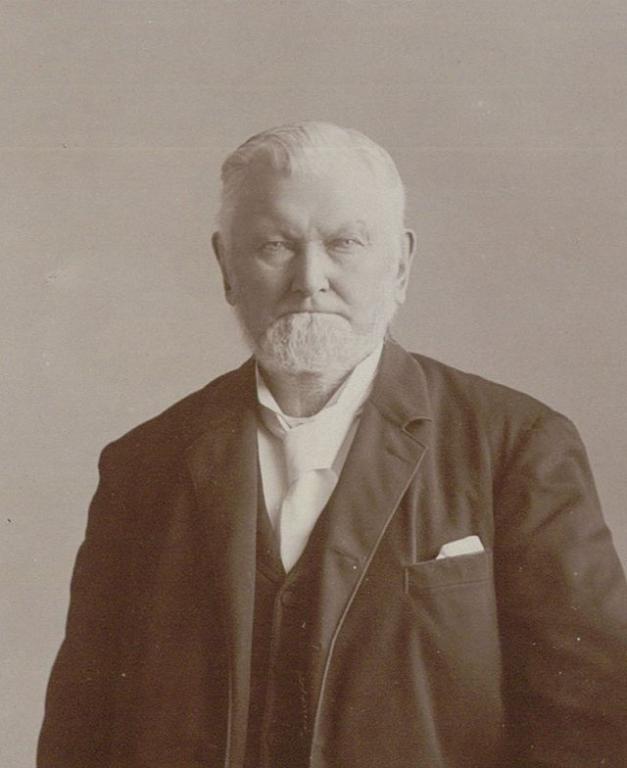
(Wikimedia Commons public domain image)
***
Interpreter Radio Show — July 18, 2021
The 18 July 2021 broadcast of the Interpreter Radio Show, which has been stripped of all commercial interruptions and archived to be conveniently available at no charge features Terry Hutchinson, Kris Frederickson, and Mike Parker. In this installment, the discussion for the first hour centers on the early Latter-day Saint pioneers and on Pioneer Day. The second portion of the show is devoted to a roundtable discussion of the upcoming Come Follow Me lesson #35 (D&C 93). The Interpreter Radio Show can be heard in the Salt Lake Valley every Sunday evening from 7 to 9 PM (MDT) on K-TALK, AM 1640. Elsewhere, even in Utah County but just about everywhere else, too, the weekly program can be accessed live via the Internet at ktalkmedia.com.
***
Oops:
““Harold B. Lee was Not a Heartlander”
***
The opening speaker for today’s portion of the 2021 FAIR conference was supposed to have been Ed Gantt, of the BYU Department of Psychology, addressing the topic of “Agentic Sexuality: How a Latter-day Saint Perspective Can Rescue Humanity from the Tyranny of the Abstract.” I was looking forward to this, as I’ve never heard him speak, Unfortunately, though, and although vaccinated, he’s apparently contracted COVID-19. So his paper — a rather dense and important one that needs to be read to be adequately appreciated — was read by his colleague Richard N. Williams, who had actually worked with him on the longer paper from which the FAIR presentation was derived. I’ve known and liked Richard for many years, so my disappointment at Ed Gantt’s absence was mitigated by my pleasure at Richard’s presence.
Jeffrey Thayne was the next presenter, on the interesting topic of “Worldview Apologetics: Revealing the Waters in Which We Swim.” His presentation was clear (almost, I would say, deceptively simple), accessible, and insightful, and I highly recommend it. I liked it very, very much.
The third presentation of the morning — clearly a reflecting the morning’s overarching theme — was entitled “The Rise and Triumph of the Modern Self: Cultural Amnesia, Expressive Individualism, and the Road to Sexual Revolution.” The speaker (a very fine speaker, incidentally) was Carl Trueman, an Anglo-American Protestant theologian and an ordained minister in the Orthodox Presbyterian Church. Again, I strongly recommend this presentation to all who might be interested.
Stephen Smoot was the first speaker after lunch, addressing the topic of “Abraham and the Stranger at Sodom and Gomorrah: Reading the Bible and Navigating LGBT Identity.” He argued, quite correctly from my perspective, that the sin of Sodom and Gomorrah wasn’t homosexuality as such but the abuse of strangers and guests in the two “cities of the plain,” directly contrasted with Abraham’s hospitality toward the three angelic strangers who had visited him shortly before. (Hospitality, he explained in some detail, was a much richer and fundamental concept in the ancient Middle East than it commonly is among us.”)
Rebekah Ryan Clark’s presentation ““The Gospel of Equal Rights”: Latter-day Saint Suffragists, 1870-1920″ was thoroughly enjoyable. Very few Latter-day Saints — to say nothing of the wider world — are aware of the fact that LDS women were in the very forefront of the battle for the electoral franchise in the United States. See the Better Days and the Utah Women’s History websites, as well as the book Thinking Women: A Timeline of Suffrage in Utah (by Katherine Kitterman and Rebekah Ryan Clark), for further information.
On 14 February 1870, Seraph Young was the first woman in the nation to cast a ballot; the equal suffrage law under which they cast their ballots was passed unanimously by a state legislature that, Sister Clark says, was composed entirely of Latter-day Saint males. Utah men, she tells us, including almost all of the leaders of the Church of Jesus Christ of Latter-day Saints — with the notable exception of Elder B. H. Roberts, whose stance was then explicitly condemned by the First Presidency — were overwhelmingly in favor of granting the vote to women. (“I have never known a woman,” said Elder Franklin D. Richards, “who felt complimented by the statement that she was too good to exercise the same rights and privileges as a man.”)
After the afternoon break, Derek Sainsbury offered an extremely interesting presentation under the title ““We mean to elect him”: Electioneer Experiences during Joseph Smith’s 1844 presidential campaign.” He not only recounted the narrative (or, perhaps better, many of the narratives) — and he is a good storyteller — but offered some helpful deductions from the episode. Brother Sainsbury is the author of Storming the Nation: The Unknown Contributions of Joseph Smith’s Political Missionaries, one of two new books on the Prophet’s presidential campaign. (The other is Spencer W. McBride’s Joseph Smith for President: The Prophet, the Assassins, and the Fight for American Religious Freedom.) He also has a website bearing the same title as his book: Storming the Nation: The Unknown Contributions of Joseph Smith’s Political Missionaries.
The final speaker of the day for the conference proper was Jennifer Ann Mackley, whose remarks were titled Discovering Church History: The Wilford Woodruff Papers Project. As you might guess, she is deeply involved with, indeed a co-founder of, the Wilford Woodruff Papers Project. I was very happy to learn more about this effort, which involves a number of people that I know but of which I’ve previously known very little.
It was another very good day. For me, the annual FAIR conference has long been one of the high points of the year, something to which I’ve looked forward and something that have always enjoyed. Thus far, at least, this year’s gathering has been no different in that regard. Of course, the third day of the conference — Friday — is still ahead of us, still needing to be entered into the account books. And the concluding speaker of the Friday session is likely to be both a bore and a boor. But, on average, I’m guessing that this 2021 edition of the FAIR conference will still come out well into the positive territory.
Posted from the floor of the 2021 FAIR conference in Provo, Utah












